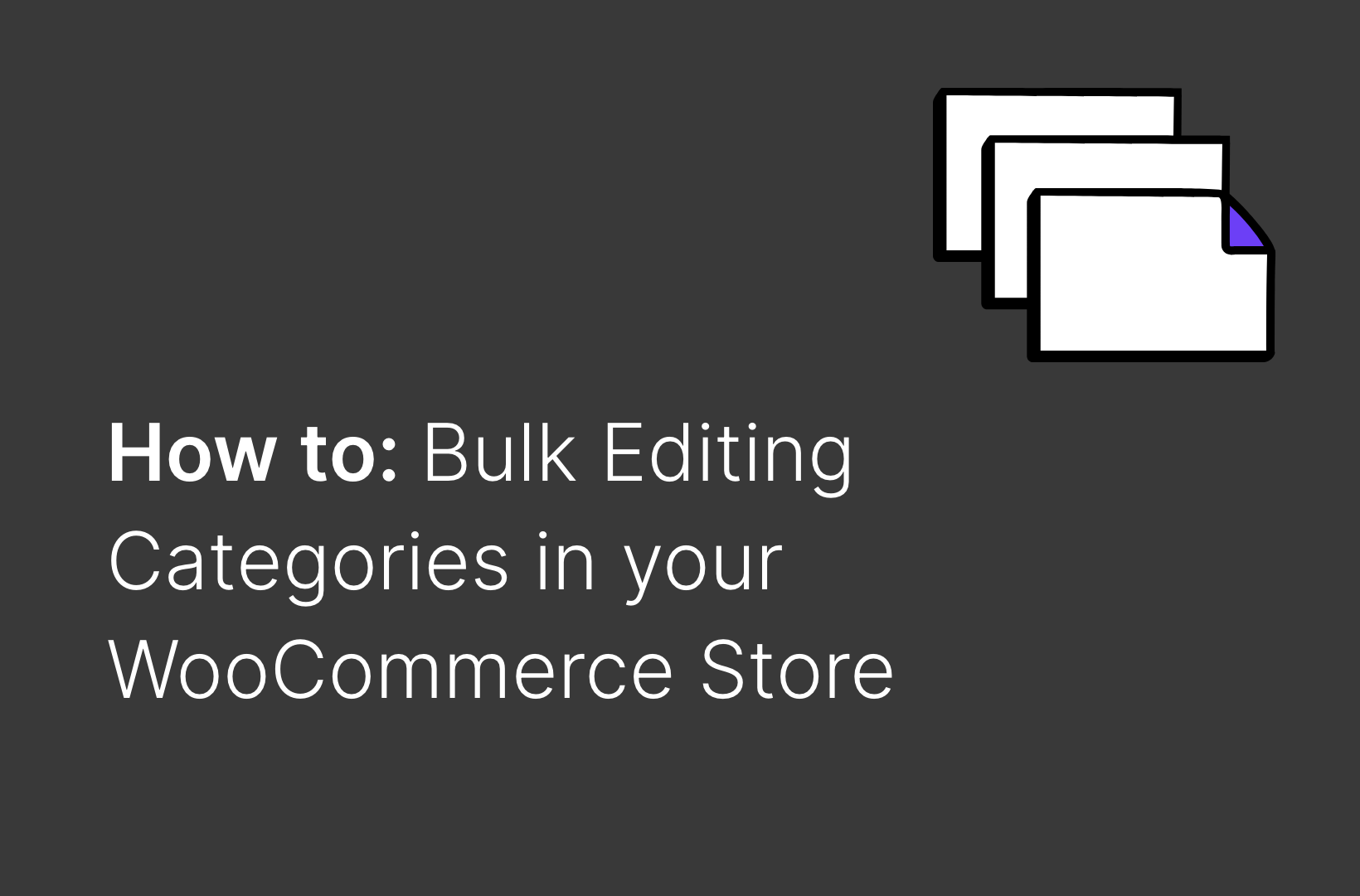7 Strategies for Effective WooCommerce Automation in 2023
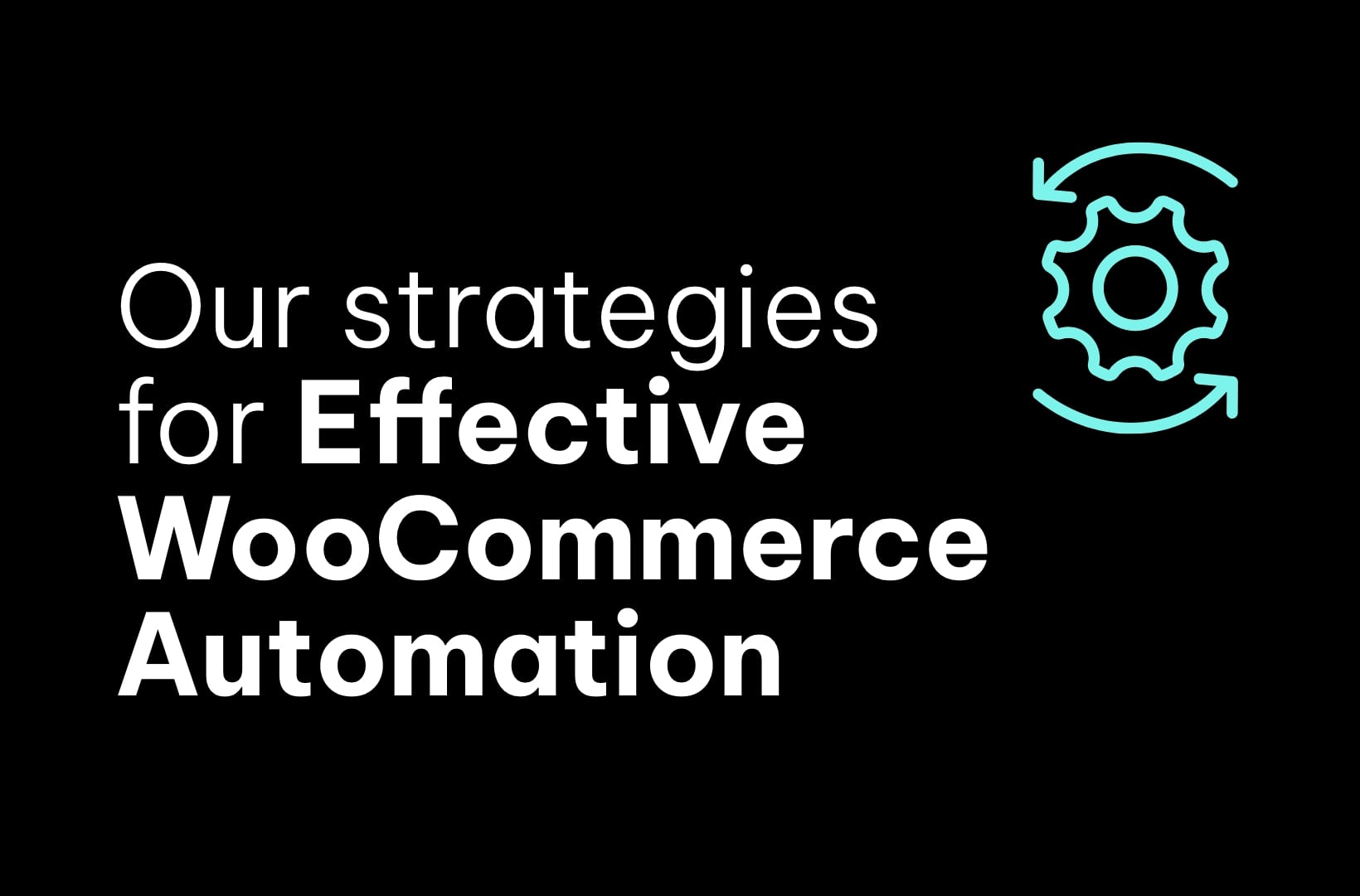
Want to streamline your WooCommerce store with effective automation strategies? Well, you’re not alone. With the ever-growing eCommerce market, online store owners are constantly seeking innovative ways to simplify their operations and enhance user experience.
But here’s the kicker: there’s no one-size-fits-all solution.
The digital retail landscape offers a plethora of approaches, tools, and tricks that you can leverage to bring out the best in your WooCommerce store. And guess what?
The more facets of your store you automate, the more you’ll amplify its efficiency, leaving your competitors wondering about your secret sauce.
Now hold your horses! Before you dive deep into the realm of WooCommerce automation, it’s crucial to make sure you have a clear map to navigate this labyrinth. That’s where we can help.
Whether you’re looking to integrate your WooCommerce store with other channels, are keen to dissect and understand performance metrics, or are simply on the hunt for the most apt plugins that can fulfill your store’s unique needs, we’ve got you covered.
Let’s unravel the seven stellar strategies that will revamp your WooCommerce store and drive those revenue figures through the roof!
Why automate your WooCommerce store?
When embarking on the journey of managing an online store, efficiency and precision are key. But how do you achieve that golden balance between delivering high-quality service and optimizing your store’s operations?
Enter WooCommerce automation.
Automation in the context of WooCommerce is the art and science of employing software or plugins to carry out repetitive tasks. Instead of relying on manual input, these tasks are executed seamlessly, without the need for human intervention.
Now, if you’re still contemplating whether automation is the right move for your WooCommerce store, here’s a rundown on some of the compelling reasons:
- Saves time: Automation drastically reduces the time spent on monotonous tasks, granting you more hours to focus on the core activities that can elevate your business.
- Minimizes errors: Manual processes are prone to human errors. By automating, you minimize the risk of mistakes, ensuring consistent and accurate results.
- Elevates efficiency: By streamlining processes via automation, your business will be able to handle larger volumes of work swiftly, leading to enhanced overall operational efficiency.
- Enhances customer experience: When your backend operations are smooth, it translates to a better front-end experience for customers. Fast responses, timely updates, and efficient handling can significantly elevate their shopping experience.
- Increased productivity: Automation tools, like AutomateWoo, handle tasks with speed, allowing you to manage higher volumes and grow your business.
- Improved accuracy: Say goodbye to the discrepancies and errors that come with manual handling. Automation ensures precision at every step.
- Cost savings: Over time, the efficiency gains from automation can translate into tangible cost savings for your business.
- Stellar customer service: With timely communications, quick resolutions, and efficient processes, your customers are bound to be more satisfied, leading to higher loyalty and retention rates.
While the scope for automation in WooCommerce is vast, there are some tasks where automation can have a significant impact:
- Email marketing: From sending out newsletters to cart abandonment reminders, automating email campaigns can ensure timely communication with your customers.
- Social media advertising: Schedule and post your product advertisements without breaking a sweat.
- Invoicing and payment processes: Send out invoices, manage payment gateways, and track payment statuses effortlessly.
- Order tracking: Notify customers about their order status automatically, reducing the constant back and forth.
- Customer support: Use chatbots or automated ticketing systems to handle preliminary customer queries, ensuring faster response times.
Given its various benefits, it’s evident that automating your WooCommerce store is not just a luxury – it’s a strategic decision. Kostas Seresiotis, Senior Product Engineer at Saucal, sums it up nicely:
Automating your store’s workflows is a no-brainer as it increases your team’s efficiency, reduces the likelihood of errors or missed opportunities and also directly affects your conversion rates by standardizing your marketing workflows.
Choosing the right approach to WooCommerce automation
While automation promises efficiency and accuracy, it’s essential to navigate its waters with a well-defined strategy. Adopting automation blindly can lead to unnecessary expenditures and suboptimal outcomes.
Contrary to popular belief, not every task should or can be automated to deliver desired results.
A strategic approach necessitates assessing factors such as:
- The inherent nature of the task.
- The costs associated with automation.
- The potential benefits and returns on investment.
This evaluation ensures that automation doesn’t become a costly endeavor but remains a productive asset to your business.
So, how do you sift through the various tasks and pinpoint the ones ripe for automation? Here are some guiding principles:
- Repetitive nature: Tasks that require the same set of actions time and again, such as order confirmation emails, are prime candidates. Automating these ensures consistency and efficiency.
- Time consumption: If a task is draining a significant portion of your resources, especially time, it’s worth considering automation to free up bandwidth for more strategic activities.
- Error-prone: Human error is a natural consequence of repetitive manual tasks. If a task is susceptible to mistakes that could cost your business, automation can bring accuracy and peace of mind.
- Customer-centric: Tasks integral to customer satisfaction, like order tracking or timely communication, can benefit greatly from automation, ensuring your customers always get the best experience.
Using these filters, you can decide upon the tasks you can and should automate. Then, the next step is to choose the most appropriate tools for the process. But how do you choose the one that aligns with your unique needs?
Here’s a list of questions you should ask:
- Does the tool deliver what it promises? Its features should cater to the specific tasks you aim to automate.
- Can the tool meld effortlessly with your WooCommerce setup without causing conflicts?
- Does the tool have an intuitive interface and clear instructions so that even the not-so-tech-savvy can harness the power of automation without hiccups?
- Is the cost of the tool aligning with the benefits it offers?
If the answer to all these questions is ‘Yes!’, that’s the tool you should opt for! By strategically choosing the right tasks and the best-suited tools, you can transform WooCommerce automation from a buzzword into a tangible asset for your business.
Top tools and services to automate your WooCommerce store
Let’s delve deeper into each category, from email marketing tools that help you maintain constant touch with your customers to sales reporting and analytics tools that provide insights into your store’s performance, highlighting the cream of the crop to help you start your journey towards WooCommerce automation excellence.
1. Email automation tools
Among the various communication channels available to store owners, email marketing continues to hold sway as one of the most effective and direct mediums.
Whether it’s sending out promotional emails to announce the latest deals, dispatching transactional emails post-purchase, or sending those critical cart abandonment reminders to potential buyers, email serves as the backbone of an online store’s communication strategy.
For instance, take a look at these five strategies that AutomateWoo recommends to maximize the impact of your email referral campaign.
However, manually managing and sending out emails, especially for a growing online store, is not just tedious but also prone to inconsistencies and errors. This is where the magic of automation comes into play, offering:
- Faster and more efficient processes: No more drafting individual emails or scheduling them manually. Automation tools take care of this, ensuring timely delivery without any hassles.
- Improved accuracy and design consistency: With predefined templates and triggers, the chances of errors are minimized. Every email is dispatched with precision.
- Personalized communication: Automation tools can segment your audience, tailoring content to resonate with specific customer groups, enhancing engagement and conversion rates.
- Performance tracking: Modern email automation tools come with built-in analytics, letting you gauge the effectiveness of your campaigns, from open rates to conversions.
While the market is inundated with email marketing solutions, a few stand out due to their seamless integration with WooCommerce and robust feature sets:
Metorik
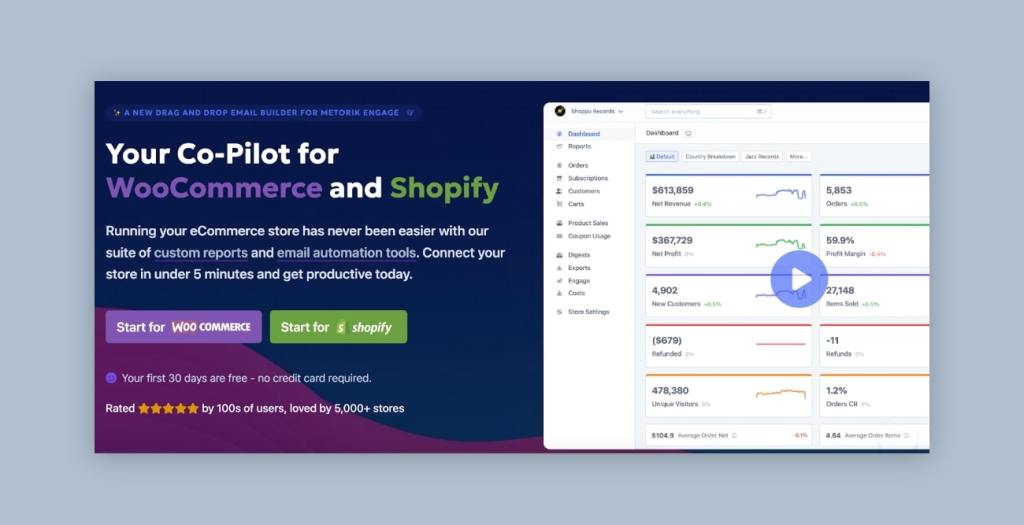
Metorik, one of the top recommendations by Saucal, serves as an indispensable co-pilot for eCommerce businesses operating on WooCommerce and Shopify platforms. Metorik’s email automation suite, aptly named Metorik Engage, serves as a robust tool for crafting highly targeted customer communications.
The platform allows businesses to recover lost carts, dispatch automated follow-up emails, and even include dynamic coupon codes to enhance customer engagement and drive sales. Metorik Engage’s intuitive interface eliminates the need for coding expertise, making the deployment of complex email campaigns a straightforward process.
Equipped with real-time tracking capabilities, it also provides insightful email reports, thus offering businesses a comprehensive solution for automating and optimizing their email marketing strategies.
Omnisend

A holistic email marketing platform, Omnisend offers advanced segmentation, pre-built automation workflows, and integrates effortlessly with WooCommerce to supercharge your email campaigns.
MailPoet

Designed exclusively for WordPress and WooCommerce, MailPoet provides an intuitive interface to design emails, segment customers, and even automate newsletters based on recent blog posts or product updates.
HubSpot for WooCommerce
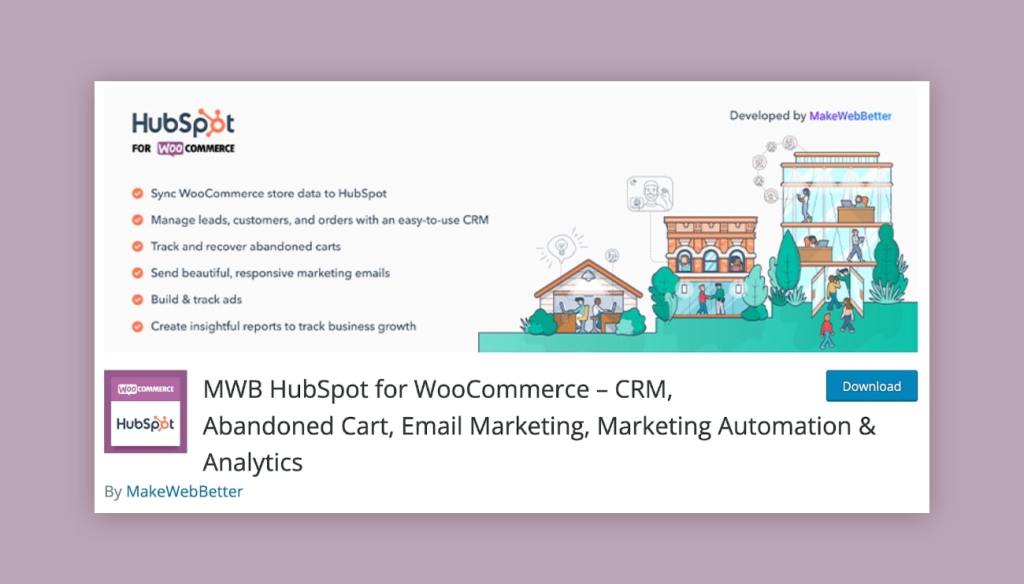
Bringing the prowess of HubSpot to WooCommerce, MWB Hubspot for WooCommerce not only handles email marketing with aplomb but also provides valuable insights into customer behavior, aiding in more targeted and effective campaigns.
2. Sales reporting and analytics
The digital marketplace thrives on data. The ability to interpret this data, from understanding sales metrics and customer behaviors to identifying overarching performance indicators, can give you an edge over your competitors.
It’s this precise understanding that sales reporting and analytics tools bring to the table.
While making a sale is the ultimate goal, the journey leading up to it is replete with valuable information. Sales reporting and analytics tools delve deep into this journey, ensuring that no piece of data goes unnoticed.
They track day-to-day sales, understand the factors that influence purchase decisions, or identify patterns in customer behaviors. These tools are silent observers, recording, analyzing, and presenting insights for store owners.
The benefits of automating this process are manifold:
- Valuable insights: Automated tools sift through vast data sets, extracting actionable insights that can inform business decisions.
- Informed decision making: With clear visibility into performance metrics, businesses can strategize with confidence, knowing they’re backed by data.
- Identifying sales trends: Recognizing patterns early on can give businesses an edge, allowing them to pivot or double down as necessary.
- Optimizing marketing efforts: By understanding what works and what doesn’t, marketing dollars can be allocated more judiciously.
- Driving profitability: Through insights and optimizations, the path to enhanced revenue and profitability becomes clearer.
While WooCommerce comes equipped with its native WooCommerce Analytics suite, offering a commendable range of reporting and data tools, it doesn’t offer many advanced functionalities. Predictive analytics, cohort analyses, intricate calculations of customer lifetime values, or the sophisticated insights driven by artificial intelligence and machine learning remain beyond its scope.
Fortunately, for those craving a deeper dive into their data, the market doesn’t disappoint:
Metorik

Metorik features here again, because in the realm of reporting analytics, Metorik offers an extensive toolkit that addresses a wide range of business intelligence needs. Whether you’re interested in tracking revenue growth, analyzing customer retention, or studying sales based on UTM channels, Metorik provides detailed, easily digestible reports.
Its customizable dashboards allow for the aggregation of various key performance indicators (KPIs), offering a panoramic view of business operations. Furthermore, the platform enables advanced report filtering, allowing users to segment data based on hundreds of parameters. With the additional benefit of downloadable charts and predictive forecasting, Metorik’s reporting analytics serve as an invaluable resource for data-driven decision-making.
MonsterInsights
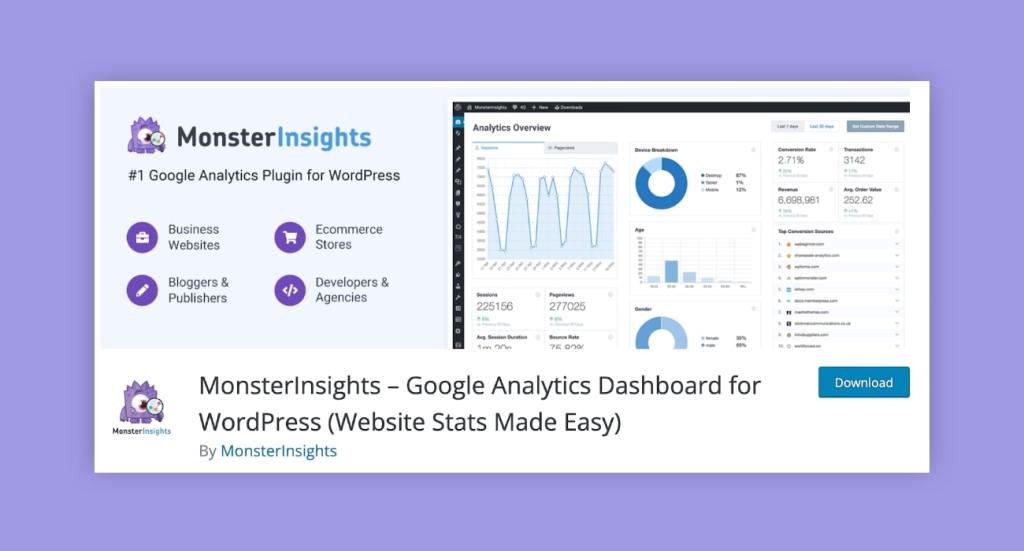
Seamlessly integrating with WooCommerce, MonsterInsights offers a user-friendly interface to track eCommerce metrics, real-time stats, and even provides insights into customer behaviors in your store.
HubSpot Reporting
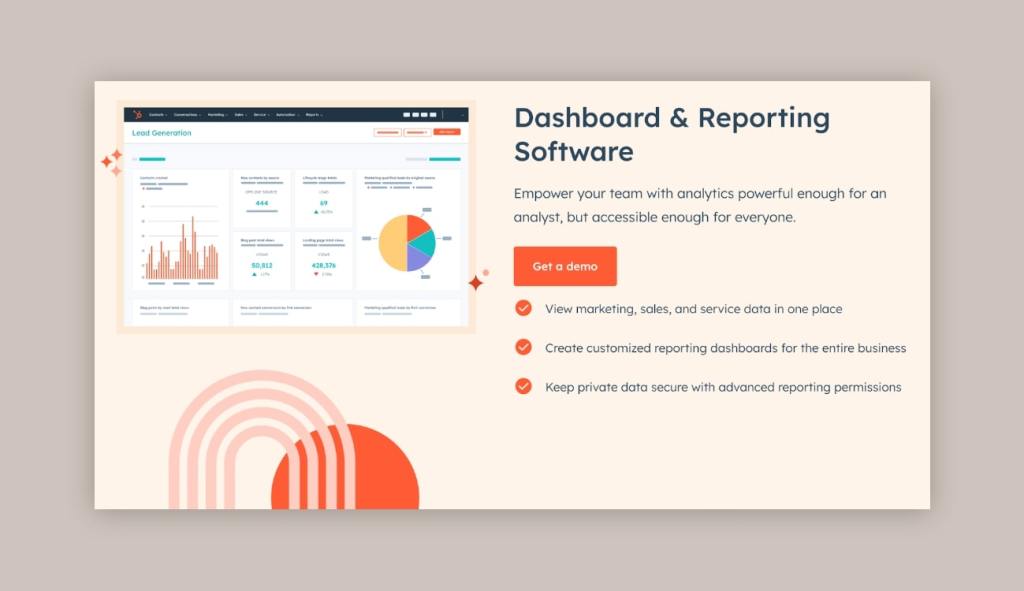
A stalwart in the analytics domain, HubSpot Reporting offers an in-depth analysis of sales data, complemented by its powerful CRM functionalities. From tracking sales funnels to understanding customer journeys, it’s a comprehensive solution for those seeking a holistic view.
As the old adage goes, “knowledge is power”. In WooCommerce, this knowledge comes from robust sales reporting and analytics tools, ensuring every decision made is grounded in data, insight, and strategy.
3. Customer loyalty tools
When choices are abundant and competitors lurk around every digital corner, creating a lasting impression is more than just about the initial sale. The real victory lies in forging enduring relationships with customers, making them not just buyers but brand advocates. To achieve this, businesses harness the power of customer loyalty tools.
Customer loyalty tools are about cultivating a culture of appreciation, beyond mere transactions. They weave together strategies to:
- Offer incentives: Through meticulously designed loyalty programs, customers are rewarded for their consistent patronage, turning each purchase into an opportunity for future engagement.
- Unlock exclusive offers: Loyal customers often get access to deals that are not available to the general public, making them feel cherished and valued.
- Facilitate targeted engagement: Leveraging customer data, these tools deliver personalized experiences, tailoring content, offers, and interactions based on individual preferences and buying behaviors.
The integration of loyalty tools does more than just offer points or rewards. Their impact resonates through the very fabric of a business because:
- A loyal customer is more likely to return, forming the foundation of a predictable and steady revenue stream.
- Incentives and personalized experiences nudge customers to shop more frequently.
- A dedicated customer not only spends more over time but often becomes an ambassador for the brand, referring others and amplifying reach.
- By focusing on building lasting relationships rather than just one-time sales, businesses ensure long-term success and resilience.
For those operating their digital storefronts on WooCommerce, there are stellar tools tailored for cultivating customer loyalty:
AutomateWoo
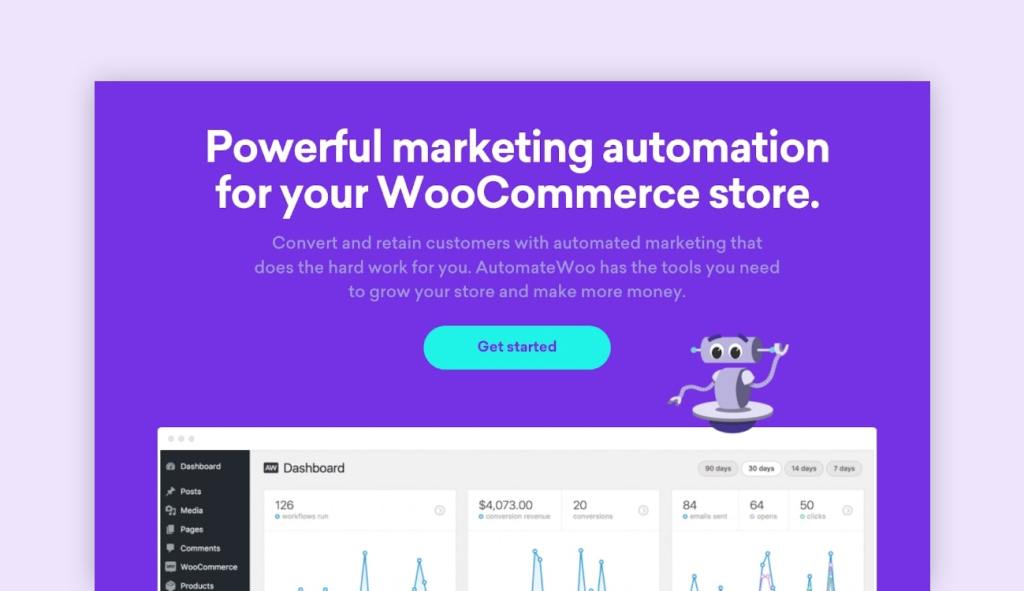
AutomateWoo is a powerhouse plugin for your WooCommerce store, designed to boost customer loyalty through automated marketing. From sending follow-up emails for reviews to reminding customers about abandoned carts, we recommend using it to aid your marketing efforts.
Features like personalized coupons and birthday emails add a personal touch, while SMS notifications keep both admins and customers in the loop. The plugin also includes specialized modules for subscription automation and Refer-A-Friend programs.
WooCommerce Points and Rewards
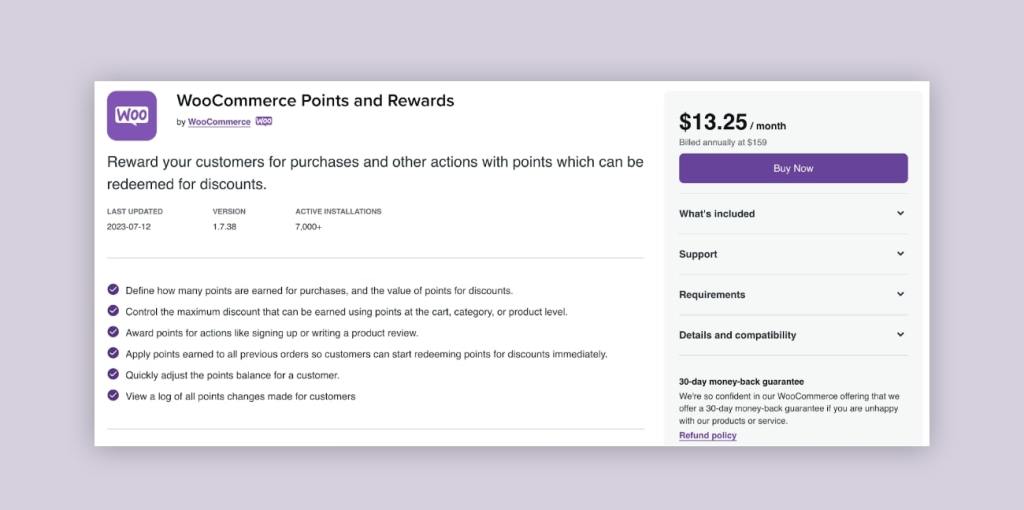
WooCommerce Points and Rewards transforms shopping into a game where every purchase, review, or referral can earn customers points, which can be redeemed for discounts or exclusive offers.
WPLoyalty
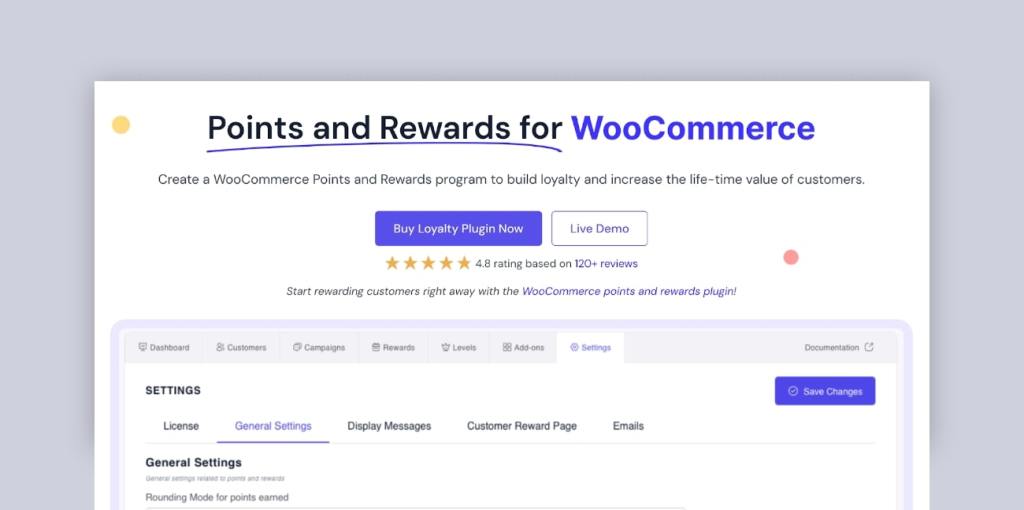
More than just a reward program, WPLoyalty offers an entire suite of engagement features. From personalized communications to tiered loyalty levels, it crafts a comprehensive strategy to make customers feel truly special.
Of course, building customer loyalty is not the work of a day. You need to consistently connect and engage with your customers in the pre- and post-purchase funnel.
AutomateWoo has a handy automated workflow for sending review reminders and incentivizing the process that encourages customers to share their experiences. This can not only build trust but also elevate your store’s SEO, drawing in more organic traffic.
4. Refunds and returns automation
Navigating the intricate paths of eCommerce is not just about facilitating seamless purchases; it’s also about managing the inevitable flip side – refunds and returns.
These processes, while crucial for maintaining customer trust and loyalty, can be tedious and prone to errors when managed manually. Here’s where refunds and returns automation tools can be worth their weight in gold, easing this burden for WooCommerce store owners.
In the ecosystem of online shopping, returns and refunds are integral touchpoints in a customer’s journey. Refunds and returns automation tools streamline these processes by:
- Automating return requests: Customers can easily initiate their return requests, reducing the need for back-and-forth communication.
- Enhancing customer communication: Automated updates about the status of returns or refunds keep the customer in the loop, bolstering trust.
- Generating return labels: No more manual interventions. Once a return is approved, labels can be generated automatically, ensuring smooth logistics.
- Facilitating refunds: Upon receiving the returned product, the system can trigger the refund process, ensuring timeliness and accuracy.
Besides, automation for returns and refunds isn’t just about efficiency; it’s also about amplifying the customer experience. Some of the standout benefits include:
- Swift and hassle-free return and refund processes invariably enhance the customer’s experience, encouraging repeat business.
- Automation curbs manual oversights, ensuring that refunds are processed accurately and promptly.
- The time and manpower traditionally spent on managing returns can be reallocated to more strategic tasks.
- These tools often provide data on return reasons, giving businesses a chance to understand and potentially rectify recurring issues.
While there are numerous tools in the market, a couple distinctly align with WooCommerce’s architecture:
WooCommerce Smart Refunder
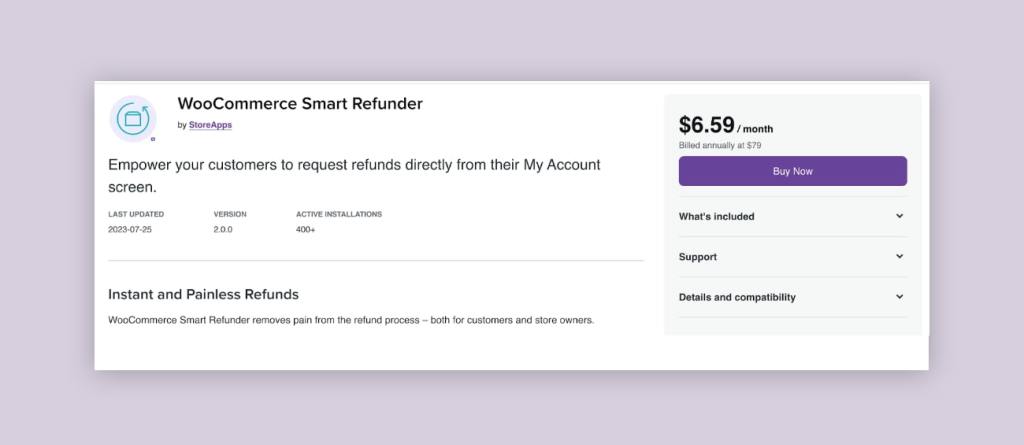
Tailored for WooCommerce, Smart Refunder simplifies the entire process. From customer-initiated refund requests to automated cashback, it ensures a fluid customer experience while providing store owners with a comprehensive overview of all transactions.
WooCommerce Refund And Exchange with RMA
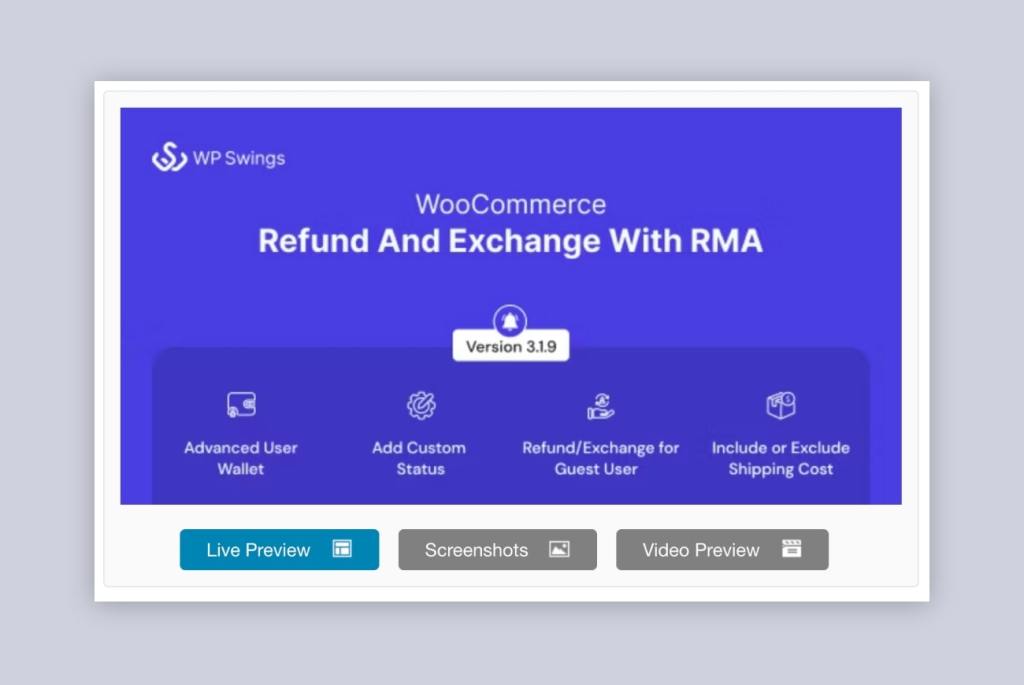
WooCommerce Refund and Exchange with RMA not only facilitates automated refunds and exchanges but also incorporates an RMA (Return Merchandise Authorization) system, ensuring that every return is processed systematically and transparently.
5. Order management
The precision, timeliness, and transparency of the order management process can make or break a brand’s reputation. While managing orders might seem straightforward, with multiple moving parts involved, it demands meticulous oversight.
Imagine a symphony where each instrument plays its part flawlessly, resulting in a harmonious performance. Order management isn’t very different. Here’s what these tools orchestrate:
- Handling orders: Right from the moment a customer hits ‘purchase’, the system kicks into gear, processing the order and setting the wheels in motion for fulfillment.
- Tracking inventory levels: Real-time updates ensure that stock levels are always accurate, preventing overselling and understocking scenarios.
- Streamlining shipping and logistics: Integrations with shipping partners make certain that orders are dispatched promptly and reach customers as committed.
- Real-time order status updates: Customers are kept informed about the progress of their orders, from the warehouse to their doorstep.
Implementing these tools into a WooCommerce store’s framework doesn’t just streamline operations, it elevates the entire customer experience:
- Transparent and timely updates make customers feel valued and in the loop, fostering loyalty.
- Automated processes drastically reduce the possibility of errors in order fulfillment.
- With systematic procedures in place, businesses can focus on growth and innovation, rather than getting bogged down by manual order management tasks.
For those operating on the WooCommerce platform, the array of available tools is both versatile and impactful:
WooCommerce Order Tracker
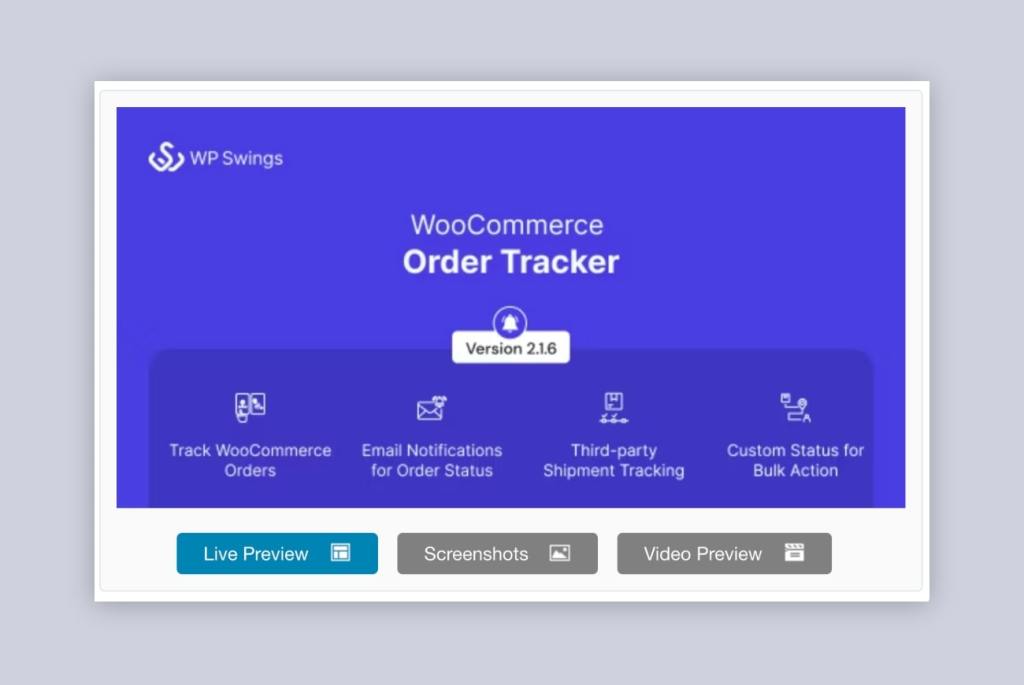
An all-in-one solution, WooCommerce Order Tracker not only facilitates seamless order processing but also integrates with various shipping partners, ensuring customers always know where their package is.
WooCommerce After The Order
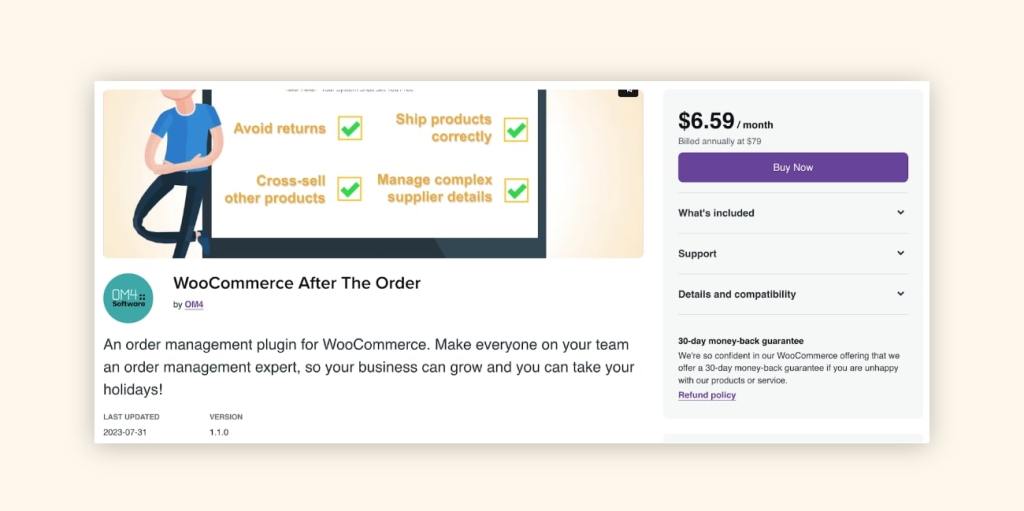
Beyond just managing and tracking orders, WooCommerce After the Order offers post-order actions, making sure that customer engagement continues even after the purchase.
6. Secure payment and invoicing solutions
The moment of truth in any eCommerce transaction is undoubtedly the payment process. It’s the bridge between a filled cart and a completed sale, and its smoothness can significantly impact the user experience.
And then, post-payment, comes the invoicing – a document of authenticity that validates the transaction. While WooCommerce does offer inbuilt invoicing capabilities, they tend to hover on the basic side.
A lack of features like easily printable/downloadable PDF options or the facility to manually send invoices can sometimes leave store owners wanting for more.
Within the digital marketplace, payment and invoicing tools play a pivotal role, ensuring both store owners and customers experience a seamless transaction by:
- Providing a secure gateway that swiftly and efficiently processes customer payments, minimizing friction and drop-offs.
- Catering to a global audience means understanding and offering multiple payment methods, be it credit cards, e-wallets, or even cryptocurrencies.
- Offering a comprehensive solution that not only produces an invoice post-purchase but also archives and manages them, ensuring easy access whenever needed.
When a business incorporates specialized payment and invoicing tools, the advantages are multifaceted:
- Automation ensures timely, accurate, and consistent invoicing, reducing manual effort and possible errors.
- A centralized system allows businesses to maintain impeccable financial records, indispensable for accounting and tax purposes.
- Secure payment gateways, coupled with professional invoices, foster a sense of trust in customers, encouraging repeat purchases.
- A smooth payment and invoicing process adds to the overall shopping experience, increasing customer satisfaction and loyalty.
For businesses keen on refining their WooCommerce store’s payment and invoicing systems, a few tools stand out in the crowd:
WP Simple Pay

WP Simple Pay simplifies the payment process by offering Stripe-powered checkout experiences without any coding. It’s fast, secure, and immensely user-friendly.
FreshBooks

Beyond just invoicing, FreshBooks offers a comprehensive suite that handles accounting, payments, and even time-tracking. The invoicing feature is particularly robust, allowing for customization, automatic follow-ups, and integration with various payment gateways.
7. Checkout management
The climax of the eCommerce experience lies not in the thrill of selecting products, but in the final act: checkout.
While customers might spend hours browsing and selecting their preferred items, it is the checkout process that ultimately determines whether these items translate into sales or merely abandoned carts. As such, checkout management doesn’t just play a role; it often takes center stage in determining the success of an online store.
An ideal checkout management system accomplishes multiple objectives simultaneously:
- Optimizing checkout pages: These are tailored to offer clarity, speed, and simplicity, ensuring that customers can breeze through the payment process without any hiccups.
- Reducing friction: Every additional step or unnecessary field is a potential roadblock. Effective checkout management ensures these barriers are minimized, if not entirely eradicated.
- Offering varied payment options: In today’s global marketplace, providing a multitude of payment methods – from credit cards to digital wallets – is not just an advantage, but often a necessity.
A well-oiled checkout system brings a slew of benefits to the table:
- By making the process hassle-free, stores witness fewer customers leaving their carts behind at the last step.
- A seamless checkout leaves a lasting positive impression, ensuring customers return for future purchases.
- Fewer drop-offs during checkout mean more completed transactions, leading to increased sales.
- Time is of the essence, and a fast checkout process respects the customer’s time, adding to the overall positive experience.
WooCommerce store owners aiming for the zenith of checkout efficiency have some formidable tools at their disposal:
Checkout Manager for WooCommerce
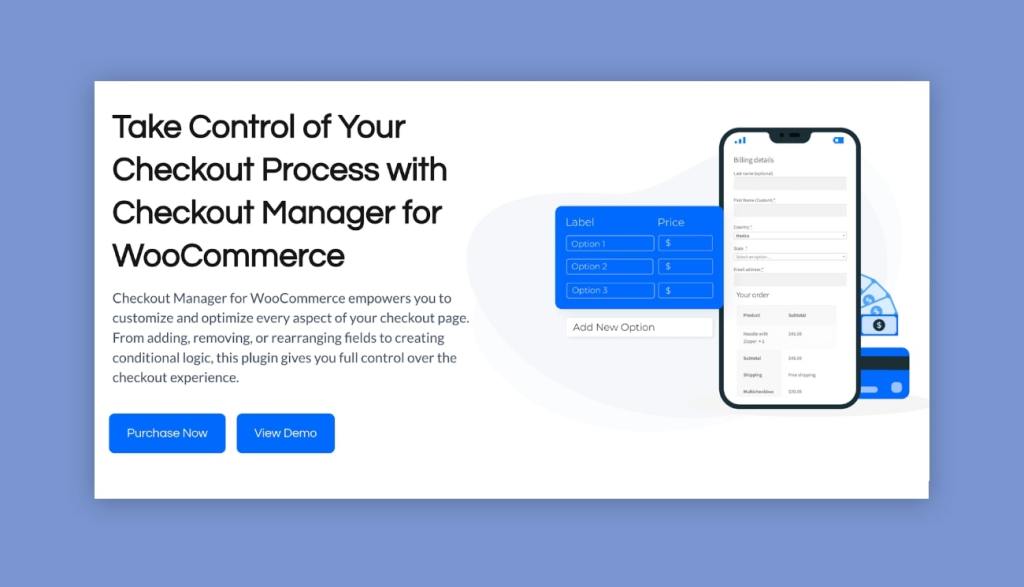
This tool is a powerhouse when it comes to customizing the checkout process. Checkout Manager for WooCommerce allows for adding, editing, or deleting fields, ensuring that the checkout page aligns perfectly with the store’s requirements.
PeachPay

A champion of one-click checkouts, PeachPay ensures that returning customers can finalize their purchases in a literal second, making the shopping experience extraordinarily fluid and fast.
8. Shipping management
The shipping experience often defines the lasting impression a customer has about a brand because shipping isn’t just about moving products from Point A to Point B. Effective shipping management in the WooCommerce environment encompasses a broad spectrum:
- Timely order processing: Proactive and swift handling of orders ensures that products are shipped promptly, setting the stage for on-time delivery.
- Accurate shipping rates: Customers appreciate transparency. Accurately calculated shipping rates, devoid of hidden charges, cultivate trust.
- Real-time tracking: The modern customer expects to know the whereabouts of their order at all times. Real-time tracking isn’t just a feature—it’s a necessity.
- Condition-based shipping rates: Whether it’s based on weight, dimensions, destination, or any other condition, tailoring shipping rates enhances the customer experience.
- Seamless carrier integration: Directly integrating with shipping carriers facilitates faster label generation, quicker pickups, and smoother deliveries.
A robust shipping management approach is not just operationally sound, but it also carves out significant advantages for a WooCommerce business:
- Given that poor delivery options often lead to cart abandonment, offering reliability can be the pivotal factor in securing a sale.
- Fewer mistakes mean fewer returns and reshipments, leading to cost savings and happier customers.
- Efficient shipping management can identify cost-saving opportunities, which can be passed on to customers or enhance profit margins.
- Regular and transparent shipping updates foster a deeper sense of trust and loyalty among customers.
For WooCommerce businesses keen on supercharging their shipping operations, certain tools stand out:
ShipStation for WooCommerce
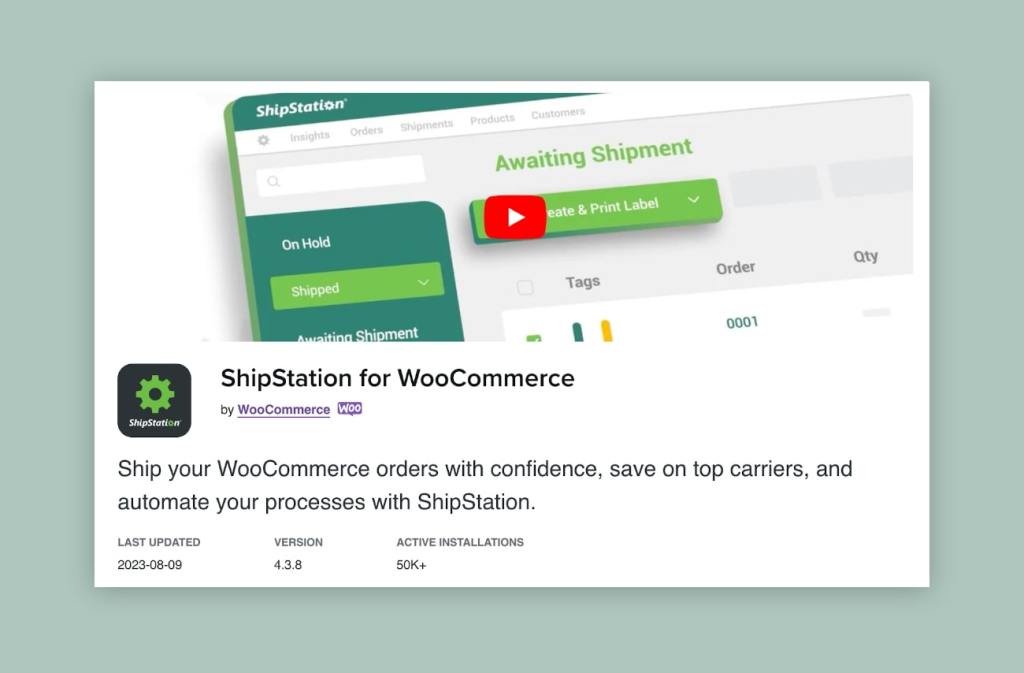
The ShipStation Integration for WooCommerce integration facilitates centralized order processing, offers discounted shipping rates, and ensures quick and efficient label printing.
WooCommerce Advanced Shipping
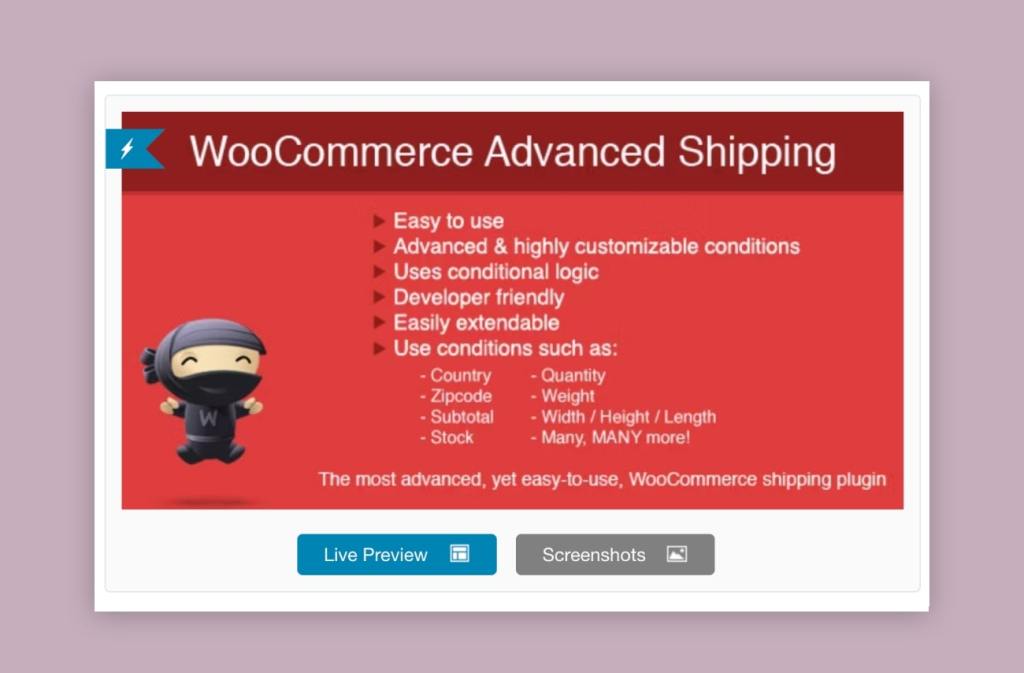
A versatile tool that empowers businesses to set up shipping rates based on a myriad of conditions, WooCommerce Advanced Shipping ensures flexibility and customer-centricity.
9. User experience testing
Automated user experience testing is an advanced procedure that leans heavily on technology to simulate user interactions. When we talk about automated user experience (UX) testing, we’re talking about a meticulous process designed to assess and enhance the user’s interactions and overall experience with websites and applications.
It encapsulates several key components:
- Test scenarios: These are predefined situations or sequences where the system behavior is analyzed under specific conditions.
- Automated test scripts: Coded instructions that automate specific tasks and simulate user actions to evaluate website or application functionalities.
- Cross-browser and cross-platform testing: This ensures that the website or application operates consistently and correctly across different web browsers and operating systems.
- Performance testing: Measures the responsiveness, reliability, and resource usage under various conditions.
- Usability testing: Focuses on understanding how real users interact with the system, aiming to improve its overall usability.
- Error and bug reporting: Automated processes to identify, log, and report issues for prompt rectification.
Switching to automated UX testing is like bringing in a powerhouse that refines the entire testing process:
- Automated testing accelerates the entire testing process, making it possible to run tests more frequently.
- It guarantees a uniform user experience, regardless of the device or platform being used.
- Automated testing catches UX issues early on, paving the way for swift resolutions and bolstered customer satisfaction.
- By eliminating a chunk of manual testing, automated UX testing ensures optimal resource utilization.
However, it’s essential to understand that automated testing isn’t just a walk in the park. It demands specific technical expertise, a firm grasp of programming languages, adeptness in testing frameworks, and proficiency in automation tools.
Given the intricacies involved, businesses often find immense value in outsourcing automated UX testing. This is where Saucal steps in.
Under its Managed WooCommerce plan, Saucal takes the reins of automated UX testing, ensuring that your website’s user experience remains top-notch. The modus operandi involves designing and creating automated tests meticulously tailored to simulate customer actions, ensuring an exhaustive evaluation of every potential user journey.
10. Monitoring store uptime
The digital realm never truly sleeps. As consumers from different time zones access online platforms, the onus is on eCommerce businesses to provide unwavering service around the clock.
Enter the concept of store uptime monitoring – a crucial factor for any thriving online business.
Store uptime monitoring is a specialized approach geared towards assessing and ensuring that an online store remains accessible to its customers. In simpler terms, it’s a measure of how consistently and reliably your online store remains operational.
For an online business, a website is the storefront – the first point of interaction with potential customers. Every minute of downtime can translate to lost sales, diminished customer trust, and tarnished brand reputation.
Integrating automation into the uptime monitoring process brings forth an array of benefits:
- Efficiency and scalability: Automated systems work relentlessly, providing constant checks and assessments without human intervention.
- Prompt downtime detection: Automated checks ensure immediate detection of any performance hiccups or downtime, thereby allowing swift countermeasures.
- Comprehensive monitoring aspects: An automated system can offer:
- Real-time monitoring for ceaseless uptime assessments.
- An alerting system for instantaneous notifications during disruptions.
- Server response time analysis to ensure the website runs optimally.
- Transaction monitoring that verifies the efficiency of checkout processes.
- Measures to guarantee accessibility of the website to all users.
- Historical data analysis to track and study the website’s uptime patterns.
However, as promising as automation in uptime monitoring seems, it’s worth noting that it demands particular technical prowess. Simple plugins may fall short of providing the comprehensive monitoring that an online business requires.
Given the complexities associated with thorough uptime monitoring, services like Saucal’s Managed WooCommerce plan are a beacon of reliability. With Saucal, you’re not just placing periodic checks, you’re ensuring that every facet of your website’s uptime is meticulously overseen.
Should any disruption occur, Saucal’s system springs into action, ensuring prompt rectifications. Plus, our dedicated team is instantly notified, ensuring rapid response and minimal downtime!
Benefits and cost savings of automating with Saucal
While plugins are convenient tools that can enhance your store’s functionality, they often scratch only the surface of what true automation can achieve, especially when delving into intricate technical tasks.
This is where the decision to outsource to experts such as Saucal can be transformative for your WooCommerce operation.
As certified WooExperts, Saucal offers:
- Deep-rooted WooCommerce expertise: Saucal isn’t just familiar with WooCommerce, it excels in it. Our depth of knowledge ensures that every automation task is executed with precision, understanding, and an eye for optimizing your store’s performance.
- Agile process: Saucal’s streamlined processes ensure rapid, efficient, and adaptive solutions that resonate with the ever-evolving demands of online businesses.
- Robust support and maintenance plans: Saucal is more than just a service provider, it’s your partner in WooCommerce development. With dedicated support and maintenance teams that stand ready to address concerns, implement updates, and ensure your WooCommerce store functions flawlessly, working with Saucal is a surefire way to achieve WooCommerce excellence.
- Transparency and dependability: One of the hallmarks of Saucal is its commitment to clarity. From the initiation of a project to its culmination, clients are kept in the loop, ensuring no unexpected hiccups or hidden costs.
Coming to the financial considerations, we know that money makes the world go round. So, Saucal also helps businesses implement automation with financial prudence. Here’s how:
- Reduction in labor costs: Automation, by its very nature, minimizes the need for manual interventions. By leveraging Saucal’s automation solutions, businesses can substantially cut down on labor costs, reallocating resources to other strategic endeavors.
- Elevated efficiency: Time, in business, equates to money. Saucal’s automation ensures tasks are completed promptly and proficiently, leading to faster turnaround times and enhanced business productivity.
- Mitigating costly errors: Mistakes, especially in eCommerce, can be expensive. Automated systems, perfected by Saucal, drastically reduce the margin of error, ensuring costly oversights are kept at bay.
Transform your WooCommerce store with Saucal
Automation, when done right, acts as the unseen catalyst that pushes an eCommerce store from being good to outstanding.
Yet, as underscored throughout, the essence of seamless automation doesn’t merely lie in accumulating a medley of plugins. It requires a judicious mix of self-managed functionalities complemented by expert technical assistance.
In this balanced synergy, not only does your store reach optimal operational efficiency, but it also safeguards itself from avoidable pitfalls and costly oversights.
And who better to guide you through this than Saucal?
With our managed WooCommerce service, you’re not just getting automation, you’re getting peace of mind, backed by proven expertise.
The benefits are manifold: unparalleled WooCommerce knowledge, tailored solutions, consistent support, financial prudence, and more.
Realize the full potential of your WooCommerce store with the right balance of automation plugins and expert management.
Get started with Saucal and embark on a transformative journey for your WooCommerce business.


